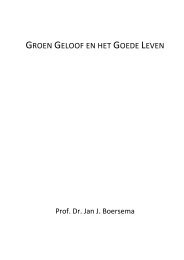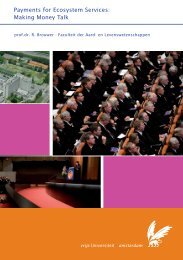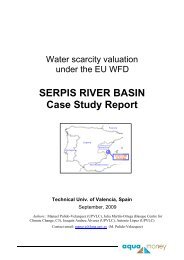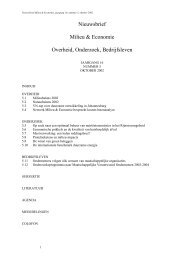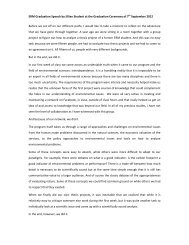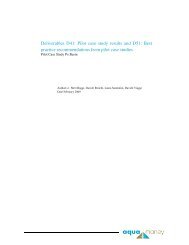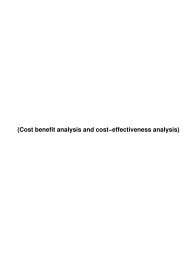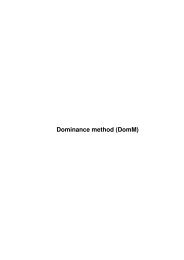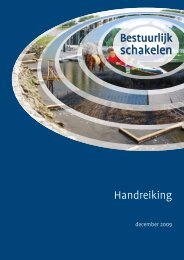AQUAMONEY CASE STUDY REPORT - VU University, Institute for ...
AQUAMONEY CASE STUDY REPORT - VU University, Institute for ...
AQUAMONEY CASE STUDY REPORT - VU University, Institute for ...
You also want an ePaper? Increase the reach of your titles
YUMPU automatically turns print PDFs into web optimized ePapers that Google loves.
3.2. Sampling procedure and response rate<br />
The main survey was carried out between 12 th and 17 th of November 2007 following a<br />
random sampling procedure (every 10th person in the urban area – city of Braila, every 5th<br />
person in the rural area - 19 settlements situated on the right and left arm of Danube) and the<br />
sample size has included 851 asked persons, from which only 61% (519 persons) accepted to<br />
complete the questionnaire and 39% (332 persons) have refused to answer the questionnaire. In<br />
the urban area almost 44% (316 persons) of the contacted person refused to participate in the<br />
survey. A frequent motivation was: “I’ve already filled in other questionnaire” which allow us to<br />
assume that this was a simple excuse <strong>for</strong> saying No or that they had been already involved in<br />
other investigations based on questionnaires. The last assumption seems to be more reliable<br />
because frequent investigations dealing with the assessment of the credibility of politicians/<br />
parties (preparation work of the election campaign <strong>for</strong> European Parliament, local authorities and<br />
National Parliament) were carried out at that moment.<br />
In rural areas the majority of refuses (14,5% of the contacted persons) came from old<br />
people (over 65 years old) who justified their attitude by lack of trust that their opinion will be<br />
taken into account by decision-makers.<br />
The respondents sample consisted in 49,13% female and 50,87% male and, 78,8% of the<br />
respondents (409 people) living in the urban area and 21,2% (110 respondents) in the rural area.<br />
The interviews’ locations were public places with high pedestrian traffic: main squares,<br />
parks, in front of shopping centers and shops, Mayoralties, Postal offices.<br />
A special attention was given to the composition of the sub-sample in order to mimic the<br />
local population structure including sex ratio (e.g. 1/1), age classes, level of education, income<br />
categories.<br />
4. Valuation results<br />
4.1. Respondent characteristics and sample representativeness<br />
4.1.1. Demographic characteristic<br />
a) Gender<br />
The percentage of males wass 51% in our sample, while in the region it is 48.3%. According to<br />
the t-test it is representative (see below).<br />
T-TEST<br />
/TESTVAL=0.483136<br />
/MISSING=ANALYSIS<br />
/VARIABLES=Sex<br />
/CRITERIA=CI(.9500).<br />
One-Sample Statistics<br />
N Mean Std. Deviation Std. Error Mean<br />
Sex 519 ,51 ,500 ,022<br />
10





